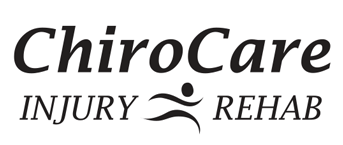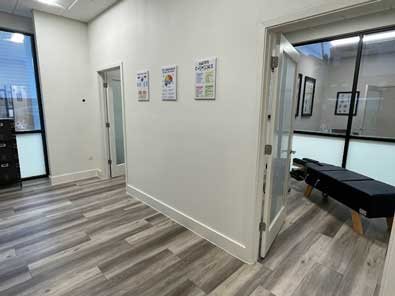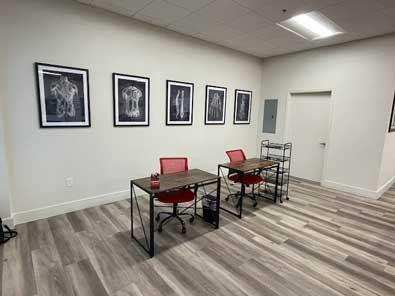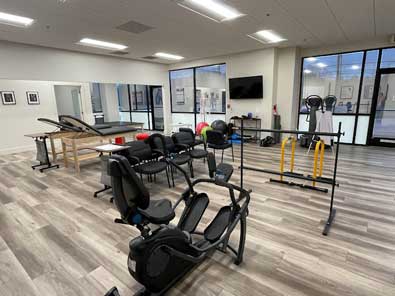Headaches
Headaches can occur as a result of neck or head trauma sustained during a car accident. Our holistic approach to headache treatment may involve chiropractic adjustments to correct spinal misalignments, massage therapy to relieve muscle tension, and relaxation techniques to reduce stress. Additionally, we may provide nutritional guidance and hydration recommendations to help manage headache triggers.
Research conducted by the Duke University Evidence-Based Practice Center in 2001 revealed that spinal manipulation offers rapid relief for headaches originating from the neck. This treatment method demonstrated fewer side effects and provided longer-lasting relief for tension-type headaches compared to commonly prescribed medications. Similarly, a study published in the Journal of Manipulative and Physiological Therapeutics in 1995 concluded that spinal manipulative therapy effectively treats tension headaches. Patients undergoing chiropractic treatment for four weeks experienced sustained therapeutic benefits, outperforming those treated with conventional medications.
Whiplash Treatment
Whiplash is a common injury resulting from a sudden head-jerking motion during a car accident. Symptoms may include neck pain, stiffness, headaches, and dizziness. Our chiropractors employ a multifaceted approach to whiplash treatment, incorporating gentle spinal adjustments, therapeutic exercises, and soft tissue techniques to alleviate pain and restore mobility. Additionally, we may recommend modalities such as heat therapy or ultrasound to further promote healing.
Neck – Cervical
Your chiropractor may perform physical and neurological examinations during your visit. In the physical exam, they will observe your posture, range of motion, and physical condition, noting any movement causing pain, and check your shoulder area. He or she will feel your spine, note its curvature and alignment, and assess for muscle spasms. During the neurological exam, they will test your reflexes, muscle strength, and other nerve changes and assess pain spread.
Additionally, your chiropractor might order tests to aid in diagnosing your condition. An x-ray can reveal narrowed disc space, fractures, bone spurs, or arthritis. A CT, CAT, or MRI scan can detect bulging discs and herniations. If nerve damage is suspected, your chiropractor may order electromyography (EMG) to measure nerve response speed.
As conservative care doctors, chiropractors do not use drugs or perform surgery. If a condition beyond this scope is diagnosed, such as a neck fracture or indication of an organic disease, a referral to the appropriate physician or specialist will be made. Permission may also be sought to inform your physician of the care you’re receiving to ensure proper coordination between chiropractic care and any other treatments.
Neck Pain Relief
Neck pain is another common auto accident injury treatment, often associated with whiplash or cervical spine injuries. Our chiropractors employ targeted adjustments, manual therapy techniques, and specific neck exercises to alleviate discomfort and promote healing. Additionally, we may recommend lifestyle modifications or ergonomic adjustments to prevent future neck pain episodes.
Soft Tissue Injury Rehabilitation
Soft tissue injuries, such as strains, sprains, and contusions, are common in auto accidents and can result in pain and limited mobility. Our team utilizes a variety of techniques, including myofascial release, trigger point therapy, and instrument-assisted soft tissue mobilization, to address soft tissue injuries and promote healing. Additionally, we may prescribe specific stretching and strengthening exercises to restore function and prevent future injuries.
Back Pain – Thoracic – Lumbar – Sacrum
Chiropractic spinal manipulation is a safe and effective spine pain treatment. It is known to reduce pain, decrease the need for medication, rapidly advance physical therapy, and require very few passive forms of treatment, such as bed rest.
The Agency for Health Care Policy and Research, a federal government organization whose mission is making health care safer and of higher quality, reports that lower back pain sufferers should choose the most conservative care first, and that spinal manipulation is the only secure, effective, and drugless form of initial professional treatment for acute low back problems in adults.
A recent patient information article in the Journal of the American Medical Association also suggested chiropractic care as an option for people suffering from low back pain. It also noted that surgery is usually not needed.
Tips to Prevent Back Pain
- Maintain a healthy diet and weight.
- Remain active in the manner prescribed by your chiropractor.
- Warm up or stretch before exercising or engaging in other physical activities like gardening.
- Maintain proper posture.
- Wear comfortable, low-heeled shoes.
- Sleep on a mattress of medium firmness to minimize any curve in your spine.
- Lift with your knees, keep the object close to your body, and do not twist when lifting.
- Quit smoking. Smoking impairs blood flow, producing oxygen and nutrient deprivation to spinal tissues.
- Work with your chiropractor to ensure that your computer workstation is ergonomically correct.
Back Pain Management
Back pain is a frequent auto accident injury treatment, often caused by muscle strains, ligament sprains, or spinal misalignments. Our comprehensive treatment approach may include chiropractic adjustments, spinal decompression therapy, and rehabilitative exercises to relieve pain and improve spinal function. Additionally, our team may utilize modalities such as cold therapy or electrical stimulation to reduce inflammation and facilitate healing.
Joint Pain Management
Joint pain, including shoulder, knee, and hip pain, can result from the impact of a car accident. Our chiropractors may employ gentle joint mobilization techniques, corrective exercises, and modalities such as kinesiology taping or acupuncture to alleviate pain and improve joint function. Additionally, we may provide nutritional counseling and weight management strategies to reduce stress on affected joints.
Ankle Sprains
Ankle sprains are prevalent injuries, with an estimated 23,000 occurrences daily in the United States alone. These are commonplace among athletes, as highlighted in a 2007 study wherein ankle sprains topped the list of injuries in 33 out of 43 sports.
An ankle sprain happens when a ligament is stretched or torn, often occurring during sudden movements with a planted foot. The ankle rolls in one direction while the foot turns in the opposite direction, leading to ligament damage.
Understanding the severity of ankle sprains is crucial. Ankle sprains can vary from mild to severe, depending on the extent of ligament damage. A mild sprain, known as Grade 1, involves stretched ligaments with some fiber damage. It may cause tenderness and swelling but usually allows for weight-bearing with mild pain.
Meanwhile, a mild sprain, or Grade 2, includes partial ligament tearing and presents with noticeable swelling and bruising.
A severe sprain, Grade 3, indicates a complete ligament tear, often requiring a surgical consultation. It results in instability, significant bruising, and the inability to bear weight.
Post-Traumatic Stress Support
Auto accident injury treatments can have a significant psychological impact, leading to symptoms of anxiety, depression, or post-traumatic stress disorder (PTSD). Our compassionate team provides supportive care and may recommend counseling, relaxation techniques, or mindfulness exercises to address emotional well-being. Additionally, we offer resources and referrals to mental health professionals as needed to ensure comprehensive support for our patients.
Auto Accident Injury Treatments for Plantar Fasciitis
Plantar fasciitis, also known as “heel pain syndrome,” impacts about 2 million people annually in the United States. It may develop gradually due to degenerative processes or sudden foot trauma and can affect one or both heels. Typically, symptoms worsen upon taking the first few morning steps or after prolonged periods of sitting or non-weight-bearing activity. Additionally, activity and prolonged weight bearing can exacerbate symptoms, while obesity may cause or worsen plantar pain.
On the other hand, the plantar fascia connects the calcaneal tubercle to the forefoot with five slips directed to each toe, respectively. Various conditions, including calcaneal fat pad atrophy, calcaneal stress fracture, nerve entrapment, and rheumatoid arthritis, may also cause foot pain. These conditions may occur in conjunction with or independently of plantar fasciitis, with a blood test to identify the cause(s).
Improper footwear can contribute to plantar fasciitis by allowing excessive pronation or under pronation and impairing shock absorption. Pronation, a natural gait process, involves the ankle rolling slightly inward after the heel strike and outward upon toe-off. Overpronation occurs when the foot rolls too far inward, stressing its soft tissues.
Auto Accident Injury Treatment for Sciatica
Sciatica describes persistent pain along the sciatic nerve, which runs from the lower back, down through the buttock, and into the lower legs. The sciatic nerve is the longest and widest nerve in the body. It controls the muscles of the lower legs and provides sensation to the thighs, legs, and soles of the feet.
Although sciatica is a relatively common form of low-back and leg pain, the term’s true meaning is often misunderstood. Sciatica is a set of symptoms—not a diagnosis for what is irritating the nerve root and causing the pain.
What are the symptoms of sciatica?
The most common symptom associated with sciatica is pain that radiates along the path of the sciatic nerve from the lower back and down one leg; however, symptoms can vary widely depending on where the sciatic nerve is affected. Some may experience a mild tingling, a dull ache, or even a burning sensation, typically on one side of the body.
Some patients also report:
- A pins-and-needles sensation, most often in the toes or foot.
- Numbness or muscle weakness in the affected leg or foot.
- Pain from sciatica often begins slowly, gradually intensifying over time.
Wrist and Carpal Tunnel
Carpal Tunnel Syndrome, or CTS, typically occurs in adults, with women three times more likely to develop it than men. The dominant hand is usually affected first, and the pain is generally severe. CTS is ubiquitous in assembly-line workers in manufacturing, sewing, finishing, cleaning, meatpacking, and similar industries. Contrary to conventional wisdom, according to recent research, people who perform data entry at a computer (up to 7 hours a day) are not at increased risk of developing CTS.
CTS is a problem of the median nerve, which runs from the forearm into the hand. CTS occurs when the median nerve gets compressed in the carpal tunnel—a narrow tunnel at the wrist—made up of bones and soft tissues, such as nerves, tendons, ligaments, and blood vessels. The compression may result in pain, weakness, and numbness in the hand and wrist, which radiates up into the forearm. CTS is the most common of the “entrapment neuropathies”—compression or trauma of the body’s nerves in the hands or feet.
Chiropractic joint manipulation and mobilization of the wrist and hand, stretching and strengthening exercises, soft-tissue mobilization techniques, and even yoga can be helpful. Some medications can help with pain control and inflammation. Studies have also shown that vitamin B6 supplements may relieve CTS symptoms.
Shoulder Joint and Rotator Cuff
The rotator cuff comprises four separate muscles: the supraspinatus, the infraspinatus, the teres minor, and the subscapularis. Most of the approximately 2 million people who seek care for rotator cuff injuries in the United States every year have injured the supraspinatus. Still, the involvement of at least one of the other muscles is more common than was previously thought.
Many people, especially athletes, may be walking around with small rotator cuff tears without realizing it because they’ve become so used to working or playing through the pain. A complete tear usually requires surgery.
Elbow Joint
There are two main types of soft-tissue injuries: focal lesions and global lesions, according to Michael Schneider, DC, Ph.D., assistant professor at the University of Pittsburgh’s School of Health and Rehabilitation Sciences and postgraduate faculty member at several prominent chiropractic colleges. Focal lesions are localized to one tissue area. An example of a focal lesion is a tennis elbow. “Tennis elbow consists of very discrete pain in a particular area—not the entire arm,” Dr. Schneider explains. Three types of tissue are affected by focal lesions: muscle, tendon, and fascia.
Auto Accident Injury Treatments – Options
At ChiroCare Injury Rehab, we are committed to providing you with the expert care and support you need to recover from auto accident injuries and regain your health and vitality. Contact us today to schedule a consultation and take the first step toward healing.
Chiropractic offers a non-invasive (non-surgical), drug-free treatment option. Chiropractic care aims to restore spinal movement, thereby improving function while decreasing pain and inflammation. Depending on the cause of the sciatica, a chiropractic treatment plan may cover several different treatment methods, including but not limited to spinal adjustments, ice/heat therapy, ultrasound, TENS, and rehabilitative exercises.
While it’s not always possible to prevent sciatica, consider these suggestions to help protect your back and improve your spinal health:
- Maintain a healthy diet and weight
- Exercise regularly
- Maintain proper posture
- Avoid prolonged inactivity or bed rest
- If you smoke, seek help to quit
- Use good body mechanics when lifting
Remember, when it comes to auto accident injury treatments in Austin, TX, ChiroCare Injury Rehab is your trusted partner in recovery. Don’t let injuries hold you back – let us help you get back on the road to wellness.
References: acatoday.org
Time to recognize the value of chiropractic care? Science and patient satisfaction surveys cite the usefulness of spinal manipulation. Orthopedics Today 2003 Feb; 23(2):14-15.
Bigos S, Bowyer O, Braen G, et al. Acute Low Back Problems in Adults. Clinical Practice Guideline No.14. AHCPR Publication No. 95-0642. Rockville, MD: Agency for Health Care Policy and Research, Public Health Service, U.S. Department of Health and Human Services, December, 1994.
Goodman D, Burke A, Livingston E. Low Back Pain. JAMA. 2013; 309(16):1738.




